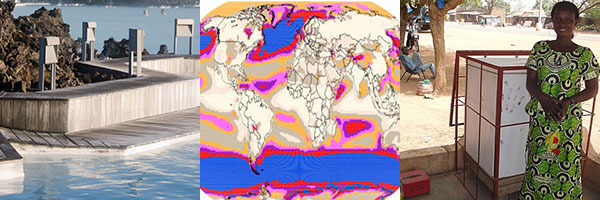
Day 1
Renewable Energy Resource Mapping: In-Country Implementation and Opportunities for Co-Funding
This session provided an update on the implementation of ESMAP's new initiative in support of renewable energy resource mapping and spatial planning. With an initial set of projects in the pipeline, there are multiple opportunities for collaboration with bilateral development agencies at the country level, including co-funding. Demand from client countries through the World Bank’s regional operations units has been very high and is well in excess of the funding available, so ESMAP is looking to pilot this initiative through a more decentralized approach to project funding in collaboration with development partners.
Global Geothermal Development Plan
ESMAP is initiating a Global Geothermal Development Plan aimed at mobilizing substantial new concessional funding for geothermal development, in partnership with bilateral funding agencies and other multilateral banks. The plan will target regions of high geothermal potential and finance the test drilling phase, in order to catalyze investment in all other stages of the geothermal value chain. Ultimately, the goal is to achieve a significant addition of geothermal electricity production capacity in several low- and middle-income countries. This session took stock of progress to date to prepare the GGDP and sought feedback from delegates, based on their programs to support geothermal development.
Africa Renewable Energy and Access Program (AFREA)
The Africa Renewable Energy and Access Program (AFREA) was established in 2008 in response to the urgent need to develop scalable, innovative solutions to close Africa’s energy access gap. The objective of AFREA is to help Sub-Saharan Africa meet its energy needs and widen access to energy services in an environmentally-responsible way. The first phase was financed by a contribution of US$28.875 million from the Netherlands. AFREA I is now almost completed, and the World Bank Africa Region and ESMAP are establishing a second phase of the program - AFREA II. The session highlighted the outcomes and lessons learned from AFREA I and discussed plans for AFREA II.
Introduction to ESMAP's Analytical Tools
This section provided participants with a broad overview of ESMAP planning tools:
- META – the Model for Electricity Technology Assessment provides a comparative assessment of the levelized costs for a range of electricity supply options, including renewable energy.
- TRACE– the Tool for Rapid Assessment of City Energy is a decision-support tool designed to help cities benchmark their energy efficiency performance against peer cities and to identify and choose among energy efficiency opportunities.
- EFFECT– the Energy Forecasting Framework and Emissions Consensus Tool is a modeling tool used to forecast greenhouse gas (GHG) emissions from a range of development scenarios.
- MACTool– the Marginal Abatement Cost Tool generates marginal abatement cost curves to compare the cost-effectiveness of different greenhouse gas emission mitigation options.
Sustainable Energy for All Technical Assistance
The World Bank is supporting the Sustainable Energy for All (SE4All) initiative through a number of commitments, including working to double the leverage of its energy lending, contributions to a “baseline” report on the three SE4All goals (universal energy access, doubling the share of renewable energy in the global energy mix, doubling the rate of improvement in energy efficiency), and an ESMAP program of technical assistance to help countries scale-up energy access investment programs. This session outlined the scope and approach of the technical assistance program, and reviewed work on the baseline report.
Results-Based Financing | An Operational Guide
This session summarized the conclusions of a recently-completed ESMAP study that aims to identify the circumstances when results-based financing approaches might be an appropriate intervention in energy programs, with a particular focus on energy access and energy efficiency activities.
Day 2
Overview of Energy Efficiency in Cities
This session focused on major trends and the future potential for urban energy efficiency, as well as reviewing the importance of assessments of city energy use. A number of products developed by ESMAP’s Energy Efficient Cities Initiative were highlighted.
This session introduced the TRACE, with a presentation of the tool’s three modules (benchmarking, prioritization and recommendations), and an overview of how TRACE has been used by clients.
Participants in this session were led through a typical implementation of TRACE. A step-by-step exercise included gathering and entering data into the tool, prioritizing sectors, and selecting recommendations to be presented to the client. At the end of the session, participants were able to use basic TRACE features.
Discussion | TRACE Case Studies | Tbilisi City Hall Case Study
This session presented concrete examples of TRACE deployment and some lessons learned, highlighting how it has helped identify key sectors and possible interventions. The session featured a presentation by the City of Tbilisi, Georgia, demonstrating how TRACE has helped to identify key sectors for improvement, as well as to support a more comprehensive city development strategy.
